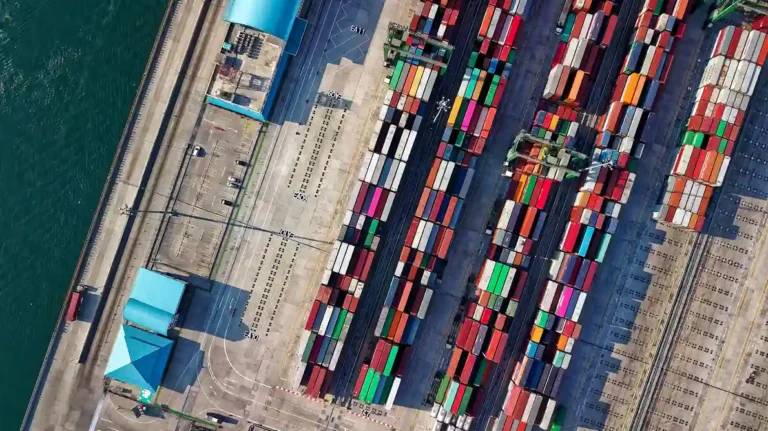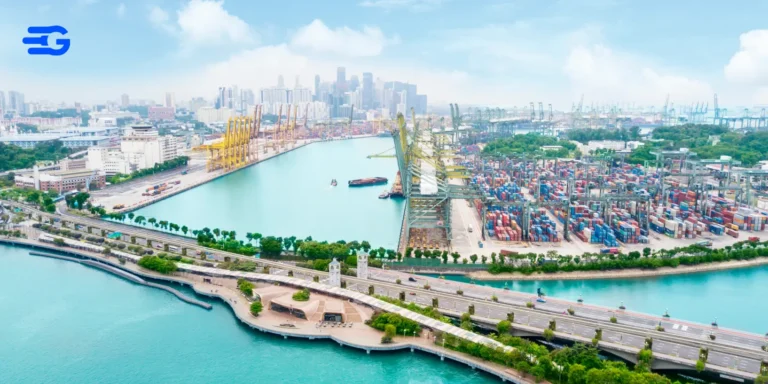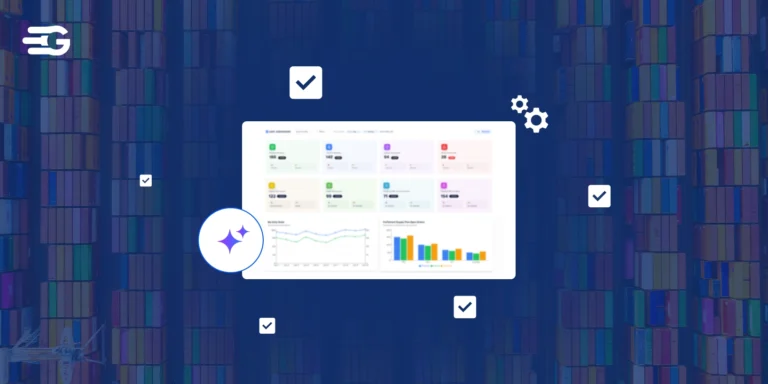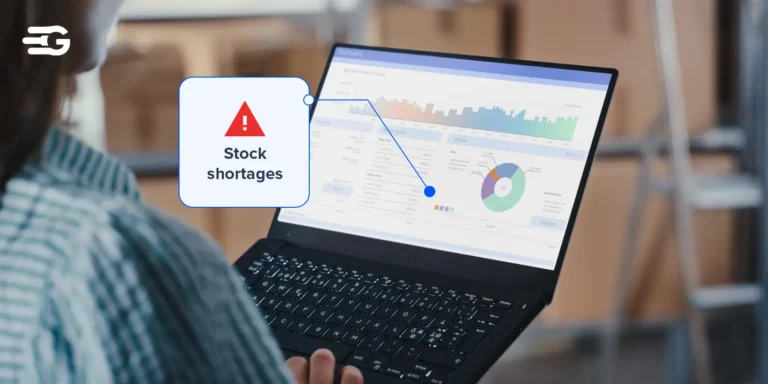3 Expensive TMS Implementation Mistakes [With Lessons]
Transportation Management System (TMS) handles the messy reality of moving freight from point A to point B. It connects shippers with carriers, optimizes routes, audits freight bills, and tracks shipments across complex supply chains. Companies regularly invest hundreds of thousands in TMS platforms only to watch implementations struggle or outright fail.
The technology works fine when properly deployed. The real problems emerge from poor planning decisions, flawed execution strategies, and teams that never fully adopt the new system. More than 50% of TMS adopters see positive ROI within 18 months, but that leaves a substantial portion of companies wrestling with disappointing results.
Here are three critical TMS implementation mistakes that consistently derail freight operations and what they teach us about getting it right.
Choosing the Wrong TMS for the Business Model
The most fundamental TMS implementation mistakes happen before anyone even signs a contract.
Companies either overestimate their needs and purchase enterprise-level solutions they’ll never fully utilize, or they underestimate their complexity and choose platforms that can’t handle their actual freight operations.
- Overbuying for flashy features – Mid-sized manufacturers purchase comprehensive platforms designed for Fortune 500 logistics networks, paying for advanced analytics and multi-modal capabilities they don’t need while struggling with unnecessary complexity in daily operations.
- Underestimating operational complexity – Companies assume their “simple” shipping needs can be handled by basic TMS solutions, only to discover their carrier mix, shipping patterns, or compliance requirements demand more sophisticated functionality than budget platforms provide.
- Ignoring growth trajectory – Businesses select TMS platforms based on current freight volumes without considering expansion plans, merger possibilities, or seasonal fluctuations that could quickly outgrow system capabilities.
- Misaligning with business model fundamentals – A company focused on just-in-time manufacturing selects a TMS optimized for bulk freight consolidation, or a project-based shipper chooses platforms designed for routine, repetitive shipments.
The lesson here cuts straight to business fundamentals.
TMS selection should mirror how your company actually moves freight, not how you think modern logistics should work. Implementation hurdles pose a significant restraint, as integrating TMS into existing systems can be a complex process, often met with resistance from organizations.
This resistance often stems from choosing systems that don’t match operational realities. The right TMS feels like a natural extension of existing processes, not a forced transformation of how teams work.
When companies get TMS selection right, the results speak for themselves. Missionpharma, a global pharmaceutical logistics company, saw their freight costs decrease while internal process efficiency improved by 20-30% after implementing GoComet’s TMS.
The platform’s ability to provide accurate shipment arrival predictions transformed their customer relationships, with clients appreciating the enhanced visibility into their supply chain operations.
This demonstrates what happens when TMS capabilities align perfectly with business model requirements.
Poor Integration with Existing Systems
The second major category of TMS implementation mistakes revolves around connectivity failures. Companies treat TMS deployment as a standalone project instead of recognizing it as part of a broader technology ecosystem.
When systems can’t communicate effectively, the result is fragmented operations that often perform worse than the manual processes they replaced.
These TMS implementation mistakes create data silos that undermine the entire TMS value proposition.
| Integration Challenge | Impact |
| ERP disconnection | Freight data lives separately from financial systems, creating duplicate data entry and reconciliation nightmares for accounting teams |
| WMS communication gaps | Warehouse management systems can’t trigger shipping requirements automatically, forcing manual coordination between fulfillment and transportation teams |
| Carrier portal incompatibilities | TMS can’t connect with major carrier systems, eliminating automated rate shopping and shipment tracking that drove the business case |
| Legacy system conflicts | Existing inventory or order management platforms use different data formats, creating translation errors that compound throughout the supply chain |
| API limitations | Third-party logistics providers or specialized freight services can’t integrate properly, forcing teams to maintain parallel processes |
Instead of centralized visibility and streamlined workflows, companies end up with multiple systems that require constant manual intervention to stay synchronized.
During the integration process, organizations may encounter issues with data migration, where transferring large amounts of data from the old system to the new TMS can be time-consuming and prone to errors.
Successful TMS implementations prioritize integration architecture from day one, not as an afterthought.
Technical evaluations should focus as much on connectivity capabilities as core TMS functionality, because even the most sophisticated freight management features become useless when isolated from operational reality.
GoComet eliminates integration headaches through pre-built connectors with major ERP platforms like SAP, Oracle, and Navision, plus seamless API connections for data transfer via SFTP, REST APIs, and custom services.
This comprehensive integration approach prevents the data silos and compatibility
Lack of Stakeholder Buy-in
The third category of TMS implementation mistakes happens when companies focus entirely on the technology and forget about the people who actually have to use it.
You can have the most sophisticated freight management platform in the world, but if your team doesn’t want to use it, the whole thing becomes an expensive paperweight. These TMS implementation mistakes around stakeholder engagement derail projects even when the technical aspects are flawless.
- Executives dump the project on IT and walk away – Leadership treats TMS like any other software purchase without realizing it changes how every department handles freight decisions, customer commitments, and vendor relationships, creating TMS implementation mistakes from the start.
- Logistics teams stick to their spreadsheets – Experienced freight coordinators who’ve been managing carriers and routes for years resist abandoning methods that work for them, especially when nobody explains why the new system is actually better.
- Finance creates bureaucratic barriers – Accounting departments impose approval workflows and data requirements that make the TMS harder to use than the old manual processes, defeating the entire automation purpose and leading to user resistance.
- Sales keeps making impossible promises – Customer-facing teams continue committing to delivery dates without checking TMS constraints, creating conflicts that make the system look unreliable to operations staff.
- Training focuses on clicking buttons instead of solving problems – Implementation teams show users where to find reports and how to enter data, but never explain how TMS changes will actually improve their workday or solve current frustrations.
People find workarounds when they don’t understand the value or when leadership forces change without explanation. The technology becomes a barrier instead of a tool, and these TMS implementation mistakes compound over time.
Building stakeholder support before deployment addresses this problem directly. When operations teams participate in vendor selection and understand how new workflows solve current pain points, resistance decreases.
TMS success depends more on adoption than features, which makes change management as critical as technical configuration for avoiding TMS implementation mistakes.
Conclusion
These TMS implementation mistakes happen because logistics is messier than software vendors admit. Companies buy platforms expecting smooth rollouts, then discover their carrier relationships don’t fit standard workflows. Integration projects drag on for months while teams juggle multiple systems that don’t talk to each other. People keep using old processes because nobody explained why the new ones matter.
The costs add up quickly. Failed implementations waste budget and time, but they also damage relationships with carriers and customers who experience service disruptions. Think your freight operations could benefit from a different approach? Book a demo with GoComet.
![3 Expensive TMS Implementation Mistakes [With Lessons] 1 3 Examples of Bad TMS Implementations and What They Teach Us](https://www.gocomet.com/blog/wp-content/uploads/2025/05/3-Examples-of-Bad-TMS-Implementations-and-What-They-Teach-Us.webp)





